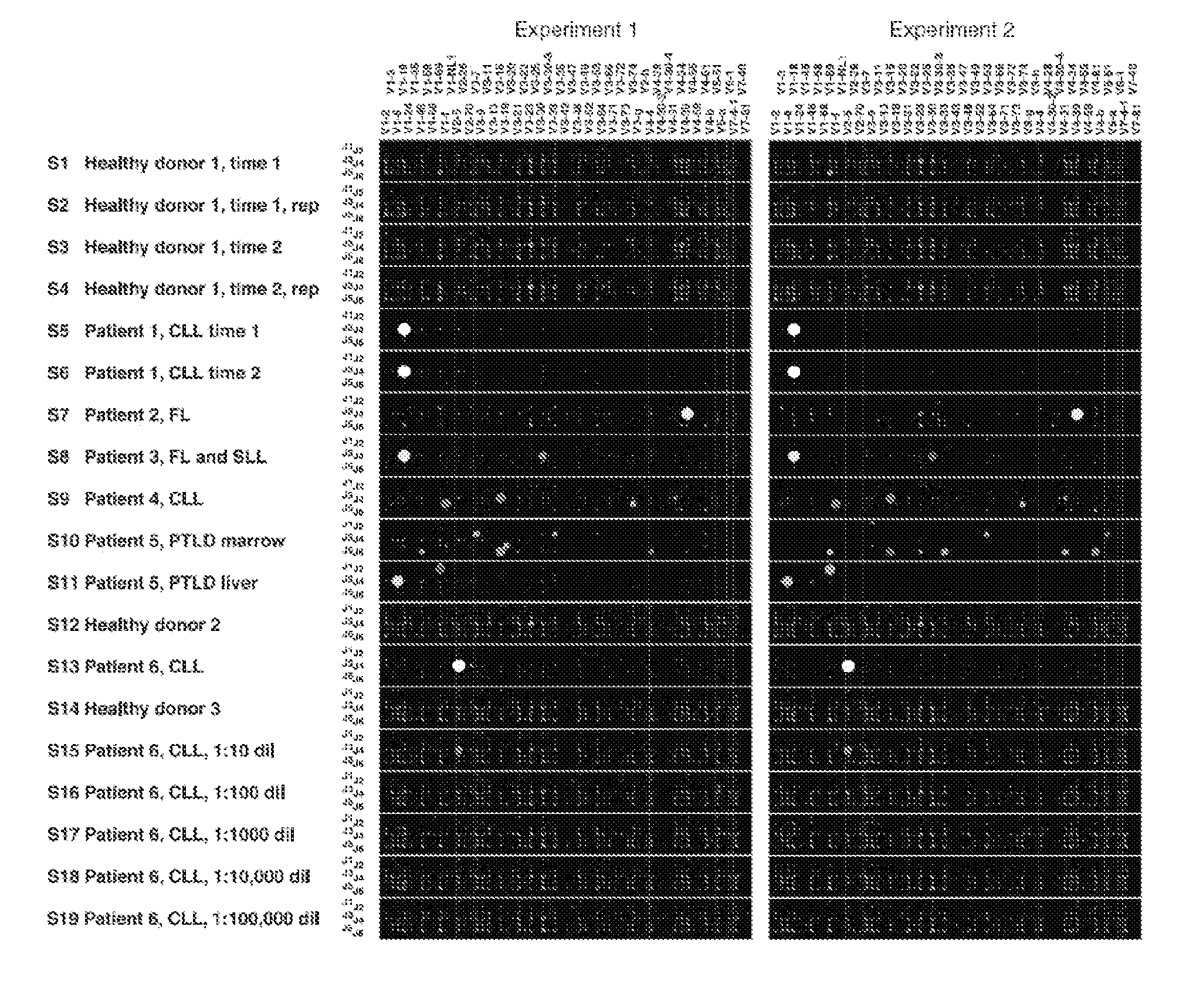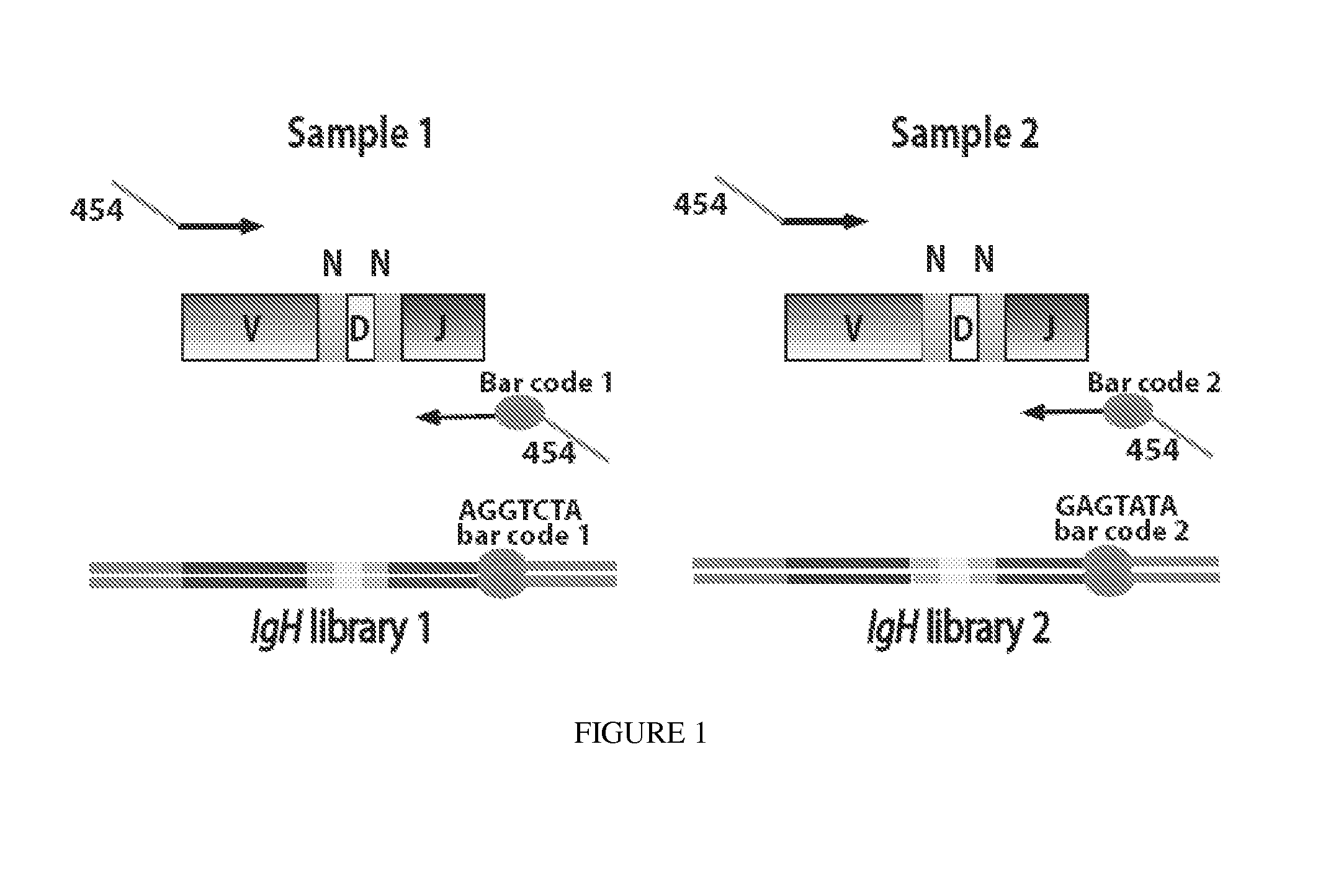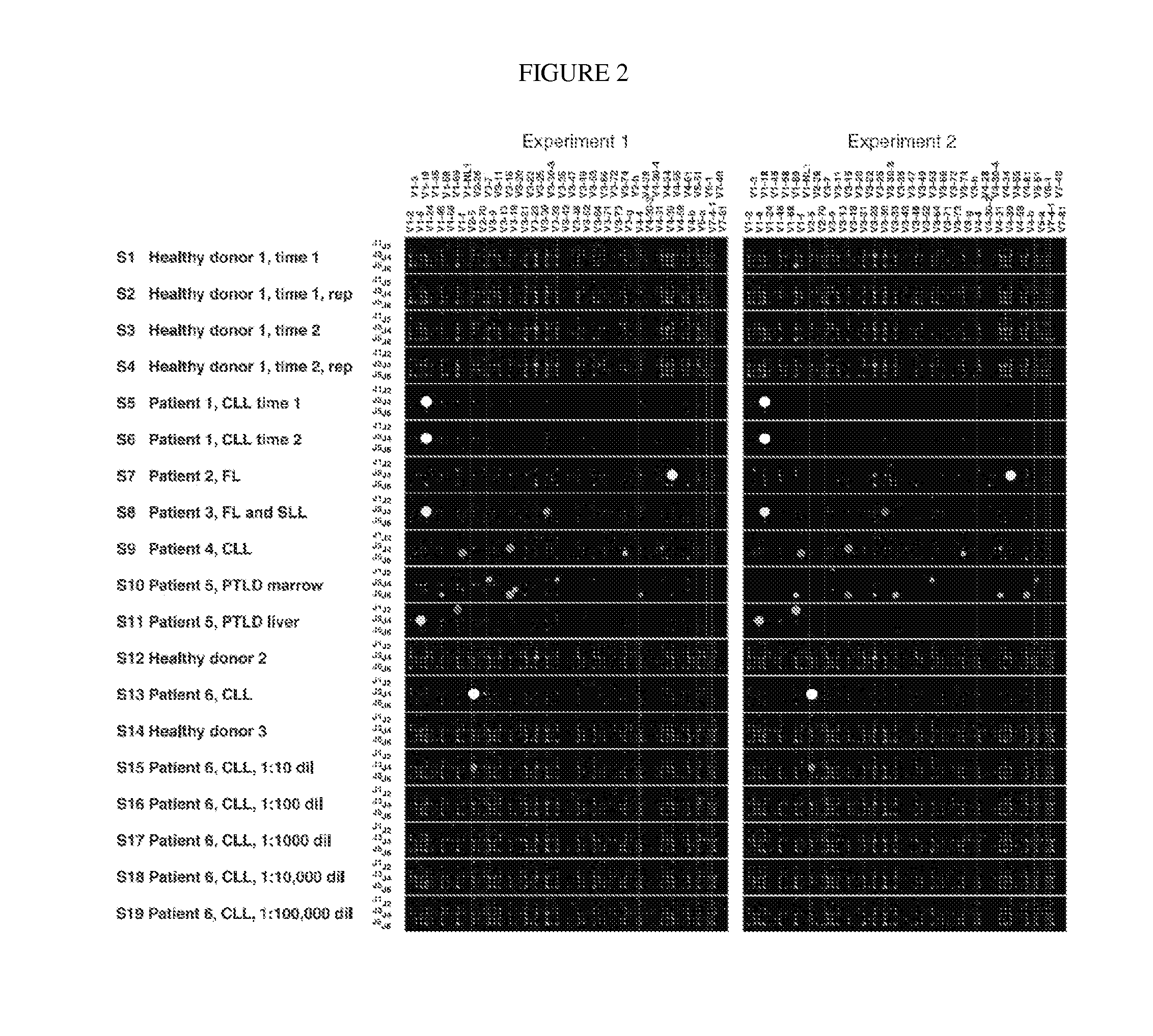Measurement and Monitoring of Cell Clonality
a cell clonality and measurement technology, applied in the identification of library members, fermentation, biochemistry apparatus and processes, etc., can solve the problems of limited use and indeterminate results, and achieve the effect of high degree of sequence heterogeneity
- Summary
- Abstract
- Description
- Claims
- Application Information
AI Technical Summary
Benefits of technology
Problems solved by technology
Method used
Image
Examples
example 1
[0090]Using a bar-coding strategy to allow pooling of multiple libraries of rearranged IgH V-D-J gene loci from many human blood samples, high-throughput pyrosequencing was performed to characterize the B cell populations in a series of human clinical specimens. Deep sequencing of immune receptor gene populations offered specific and detailed molecular characterization as well as high sensitivity for detecting sequences of interest and to transform understanding of the human immune system while aiding in diagnosis and tracking of lymphoid malignancies.
Results
[0091]Bar-Coded High-Throughput Pyrosequencing of Rearranged IgH Loci.
[0092]We amplified rearranged IgH loci in human blood samples with BIOMED-2 nucleic acid primers adapted for high-throughput DNA pyrosequencing. A unique 6-, 7-, or 10-nucleotide sequence “bar code” in the primers used for a particular sample allowed pooling and bulk sequencing of many libraries together and subsequent sorting of sequences from each sample (FI...
example 2
Analysis of Vaccination Responses by Immune Receptor Sequencing Materials and Methods
[0144]Specimens.
[0145]De-identified specimens of genomic DNA from human peripheral blood mononuclear cells were obtained under Institutional Review Board approved protocols at our institution (Stanford University). Subjects were recruited at Duke University and provided informed consent, and the Duke University Institutional Review Board approved the protocols for all studies. Subjects were given trivalent inactivated seasonal influenza vaccine. Blood was drawn from immunized subjects on day 0 before vaccination and on days 7 and 21 after challenge.
[0146]Serological measurements. Subjects were classified as influenza vaccine ‘seroconverters’ or ‘non-seroconverters’ based on measurements of pre-vaccination and day 21 post-vaccination plasma antibody titers in hemagglutination inhibition assays (Coffey et al. Influenza virus. Curr Protoc Immunol Chapter 19, Unit 19 11 (2001)). ‘Seroconverters’ were th...
PUM
| Property | Measurement | Unit |
|---|---|---|
| time period | aaaaa | aaaaa |
| time | aaaaa | aaaaa |
| time | aaaaa | aaaaa |
Abstract
Description
Claims
Application Information
 Login to View More
Login to View More - R&D
- Intellectual Property
- Life Sciences
- Materials
- Tech Scout
- Unparalleled Data Quality
- Higher Quality Content
- 60% Fewer Hallucinations
Browse by: Latest US Patents, China's latest patents, Technical Efficacy Thesaurus, Application Domain, Technology Topic, Popular Technical Reports.
© 2025 PatSnap. All rights reserved.Legal|Privacy policy|Modern Slavery Act Transparency Statement|Sitemap|About US| Contact US: help@patsnap.com



